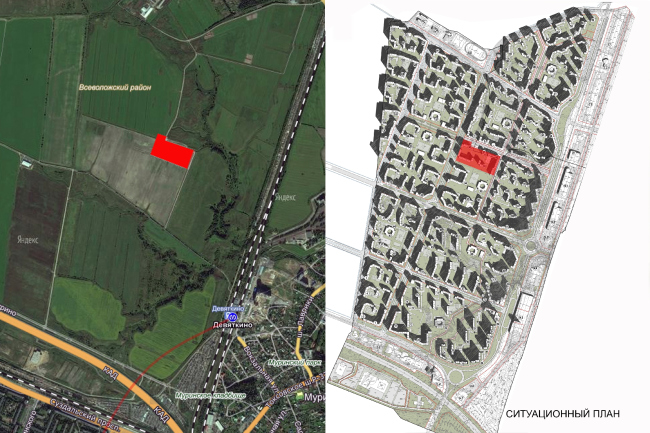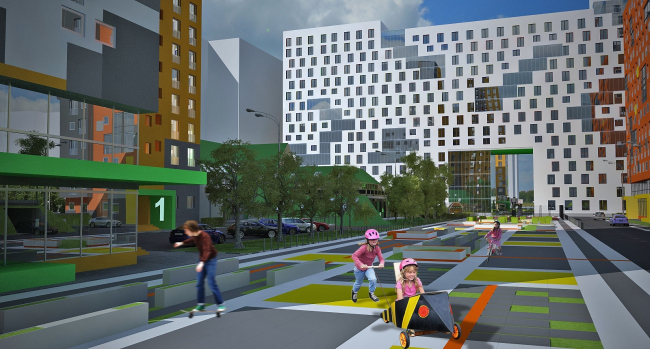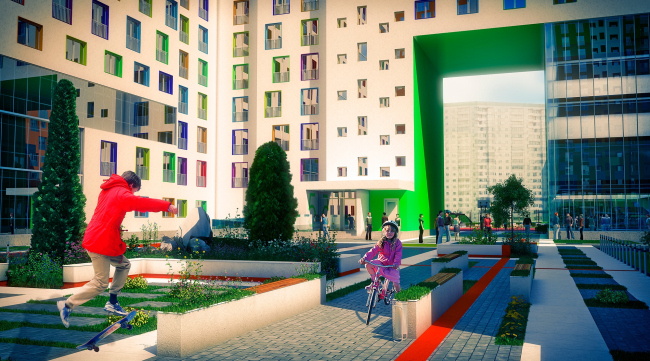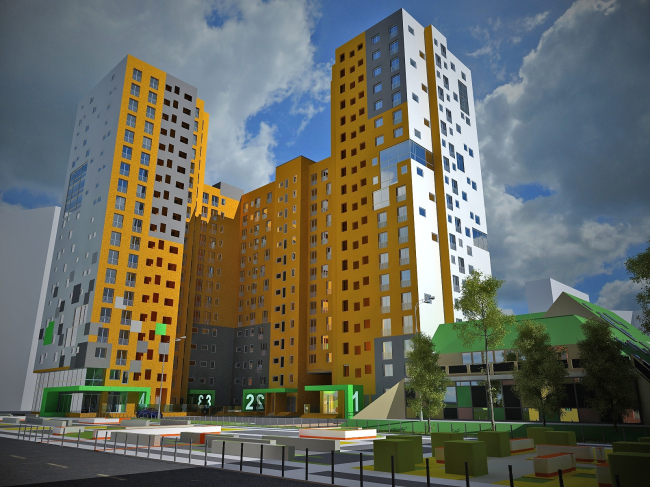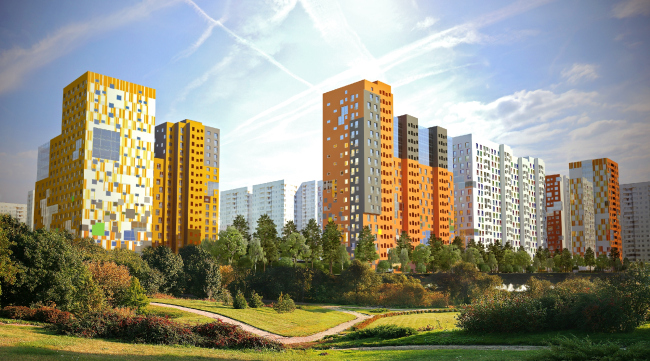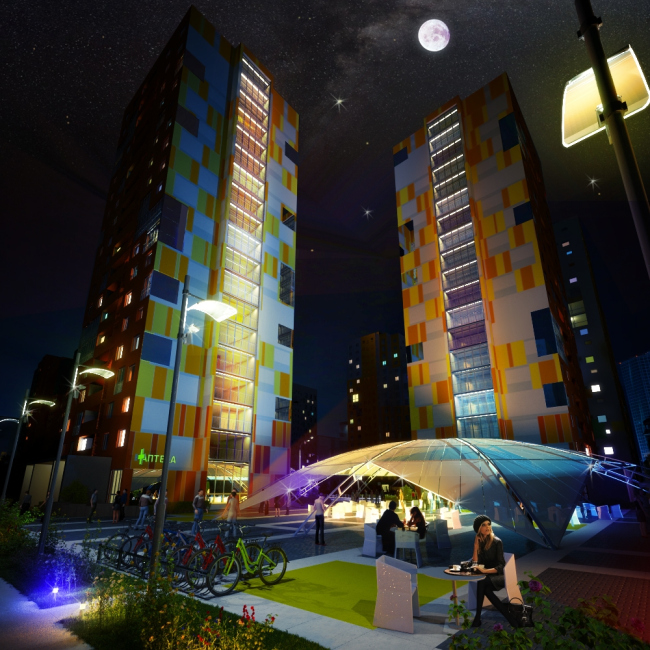|
Among the suburban high-rises of Saint Petersburg, the Bureau of Victor Vissarionov has designed a spectacular residential complex with a broad pedestrian boulevard and a landscaped public territory.
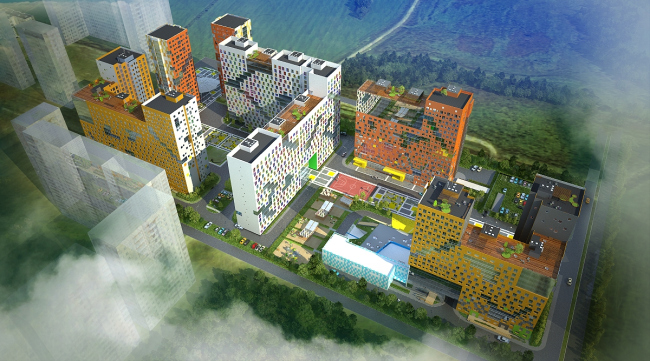
Resediential complex, settlement of Murino © Vissarionov Studio
The residential complex will become a part of a large block of high-rises that will be built east of Saint Petersburg's Ring Road, next to the "Devyatkino" metro station, not far away from the settlement with a beautiful name of Murino, and the village of Lavriki, on the strip of formerly arable land. Right now, blocks of residential high-rises are being built here. The Yury Vissarionov project will take up one of the rectangular sites constituting the new block - and the authors of the project made every effort to make their fragment of the future housing look bright and memorable; they endowed it with the "marks of a traditional residential block" and a multitude of elements of the comfortable urban environment.
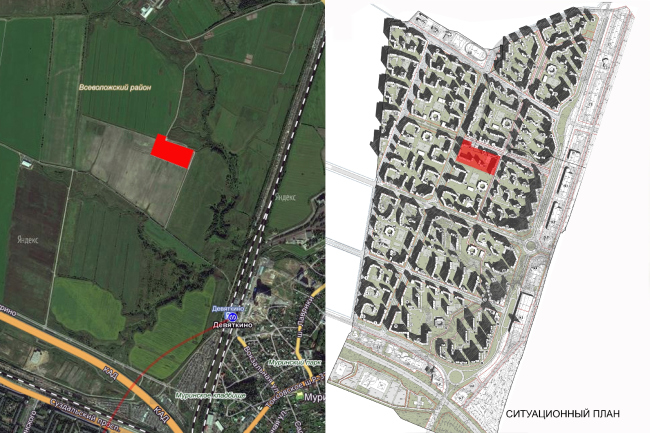
Resediential complex, settlement of Murino. Location plan. © Vissarionov Studio
The complex consists of six residential buildings, a kindergarten, a local library and other "service establishments" built into the first floors of the houses. The architects divided the rectangular site into two almost-square parts: the northwest and the northeast, placing, on the conditional border between them, a wing of a dazzling-white building of a symmetric L-shaped layout (the other wing is parallel to the northeast border of the site). The windows are encased into multicolored frames - as if drawn with pencil crayons: en face, the house is almost totally white but, when viewed from the side, the color is enhanced due to the perspective contraction and it explodes in a rainbow. In some places, the windows are gathered into austere vertical rows, in some they tend to father in checkered patterns, and in some places they merge into colorful glass spots - all this helps to liven up the facade wall and make it look more cheerful and diverse. Similar rhythmic techniques the architects use in the other multicolored buildings: set around the site's perimeter, the yellow-orange and reddish houses are reflected in the glass surfaces, and all this looks like the section view of the sun in the school science textbook: the white-hot nucleus and the yellow-warm corona. The antipode of the white "core" is the black tower on the southeast border of the site.
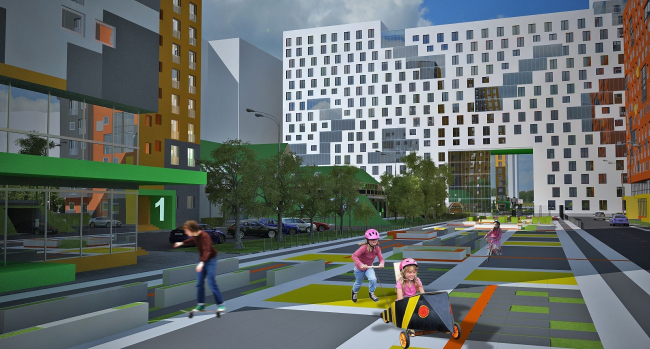
Resediential complex, settlement of Murino © Vissarionov Studio
However, what is also important is the fact that the white slab of the perpendicular building is cut through with a large square portal - which makes the house look like a giant triumphal arch. Through the aperture, runs the pedestrian boulevard - the longitudinal axis upon which the entire complex is strung. The boulevard has in it little parks, playgrounds, and even a volleyball field. And while the slab of the white building splits the territory in two, the boulevard, on the other hand, ties it up with a strong thread, allowing, at the same time, the people to move around freely. The aperture is situated in the very middle of the site: its two jambs are painted green, and the third one, which is glass, reflects them, all the three forming a green frame above the boulevard. Our sun, as it turns out, is green at its innermost heart! This color is picked up by the frames overhanging above the hallway entrances; sometimes you will see an odd yellow one among them, though.
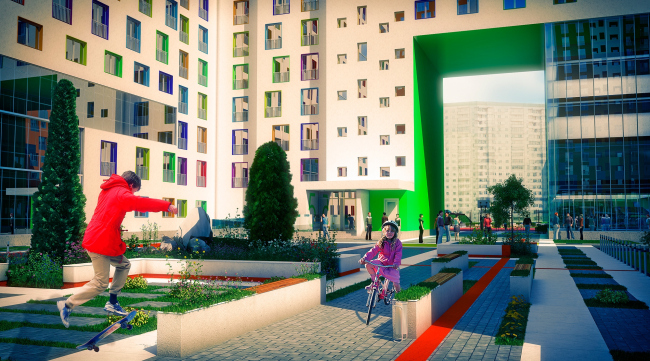
Resediential complex, settlement of Murino © Vissarionov Studio
In the west part of the site, the residential buildings are virtually built all along its perimeter, tending to be more of a closed character, like the block planning. The entrance to the central boulevard from this side is marked by the 19-floor towers looking like the pillars of the entrance gate, only many times bigger. Their color makes up for the laconism of their form: the orange and red surfaces alternate with white and gray ones, and the white facades are now and then decorated with the sunny and cheerful pixel designs.
In the eastern "field", the architects are planning to build two more residential "slab" houses, one orange and yellow, and the other of a light red color - we will note at this point that the authors are saving the warmer red color for the formally "cold" northern border of the site: the buildings are growing visually "warmer". In the eastern part, the number of residential houses grows smaller, and the number of the public territories grows larger; a fair amount of space is given to the vegetation, the recreation territories adjoin the landscaped territory of the kindergarten whose building is partially hidden on the green hill, just like the car parks hidden in the northeast corner of the block.
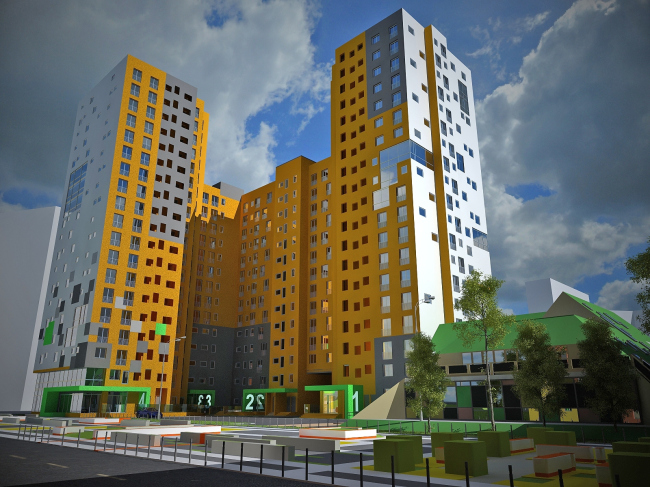
Resediential complex, settlement of Murino © Vissarionov Studio
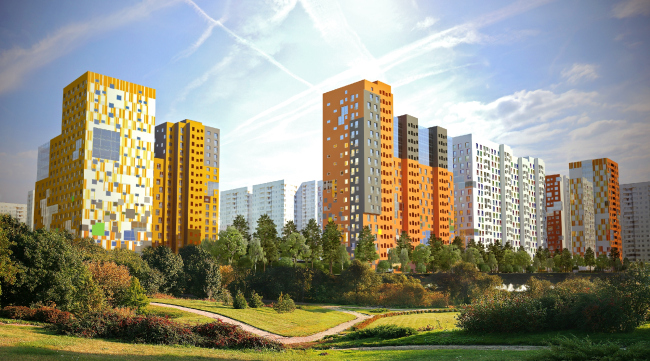
Resediential complex, settlement of Murino © Vissarionov Studio
What is also important is the fact that the architects definitely placed their bets on the variety of the living environment inside the residential complex. One will find here a lot of "right" things: grads unhindered by the curbs, miniature gardens amidst the lawns, outdoor furniture, and the bicycle parkings; bright markings on the asphalt, a small amphitheater on the sloping roof of the garage, as well as the triangular windows. Large number figures on the hallways. Besides the free-access and the "traditional" public zones on the ground level and on some of the roofs - in the places where the number of floors falls down to fifteen - there are also open-air terraces with awnings, flower beds, wooden floors, tables, and decorative trees in tubs. As a result, we are getting a great piece of highly saturated urban environment.
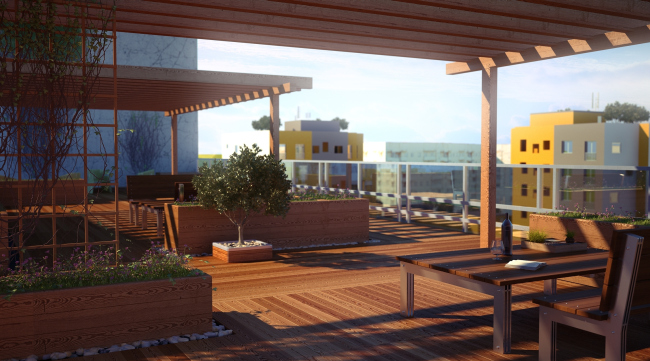
Resediential complex, settlement of Murino © Vissarionov Studio
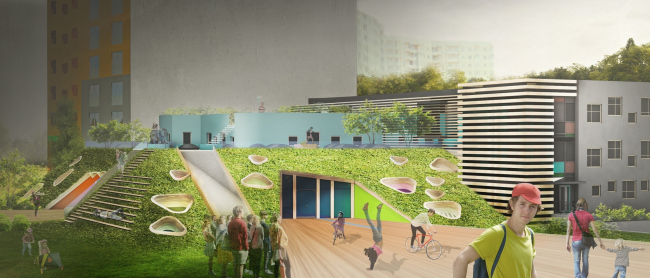
Resediential complex, settlement of Murino © Vissarionov Studio
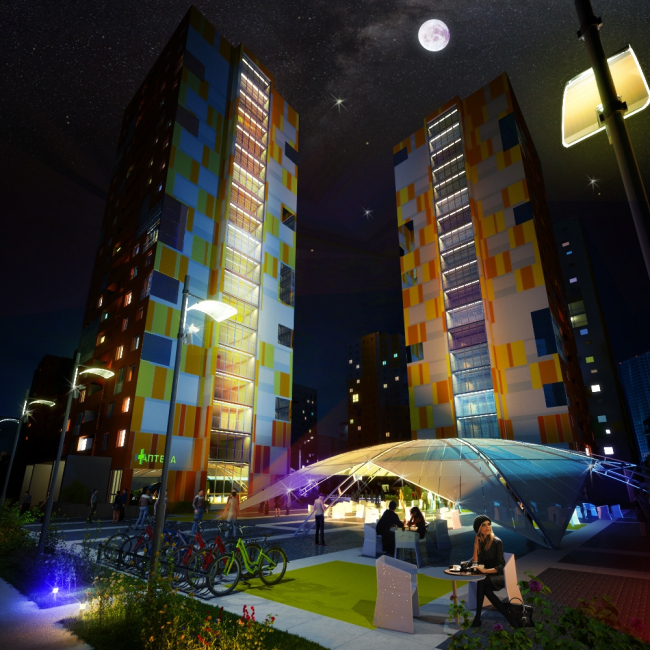
Resediential complex, settlement of Murino © Vissarionov Studio
The kindergarten adjoins the yellow building on the corner but the cold pixel finish of its facades "gives away" its special function and makes it different from its neighbors. One should say that its name - "Palette" is a great match for the whole complex: one cannot miss out the great color work that the architects did. It looks as if the authors were doing an abstract painting, choosing the cheerful and sunny colors that the rainy Saint Petersburg's climate is in such desperate need of. In the harsh conditions of the "beyond-the-ring-road" construction, among the multitude of faceless high-rises, the architects made their "fragment of pallet" as bright and cheerful as a warm little sun.
None
None
None
None
None
None
None
None
None
|










